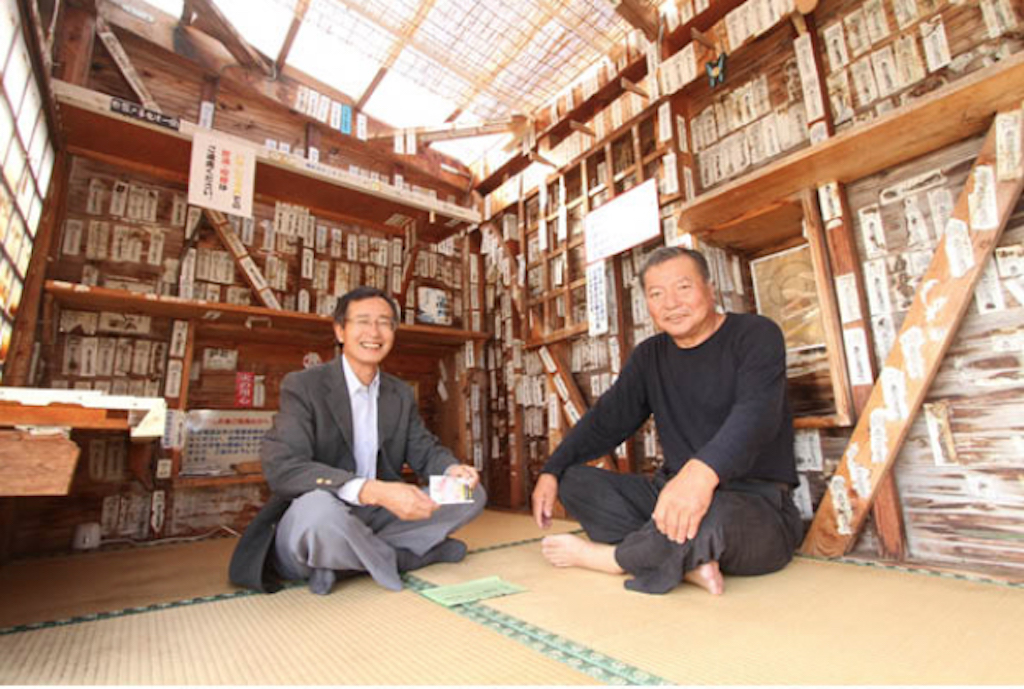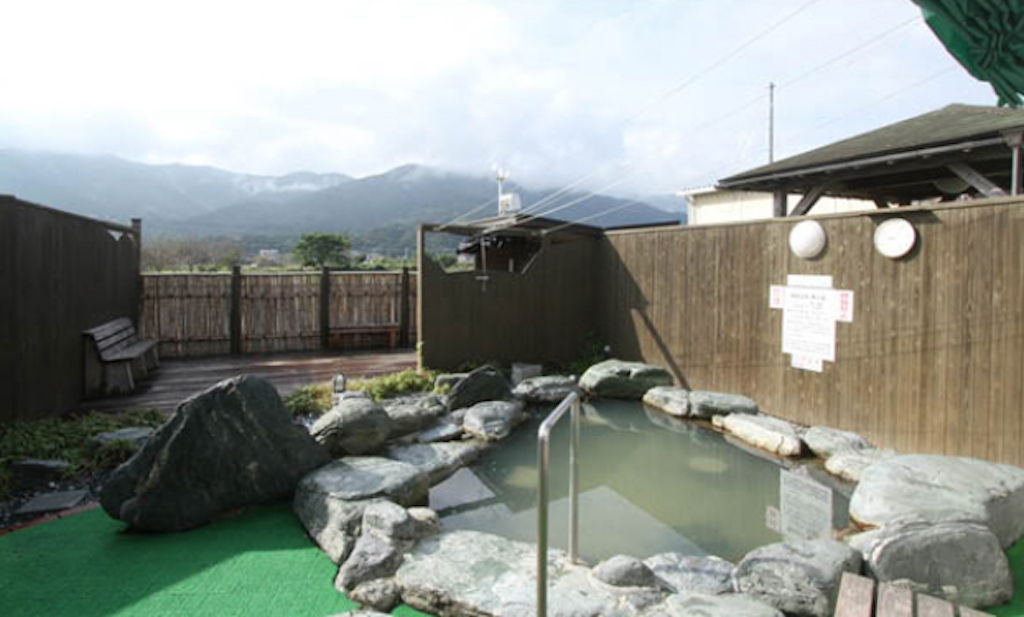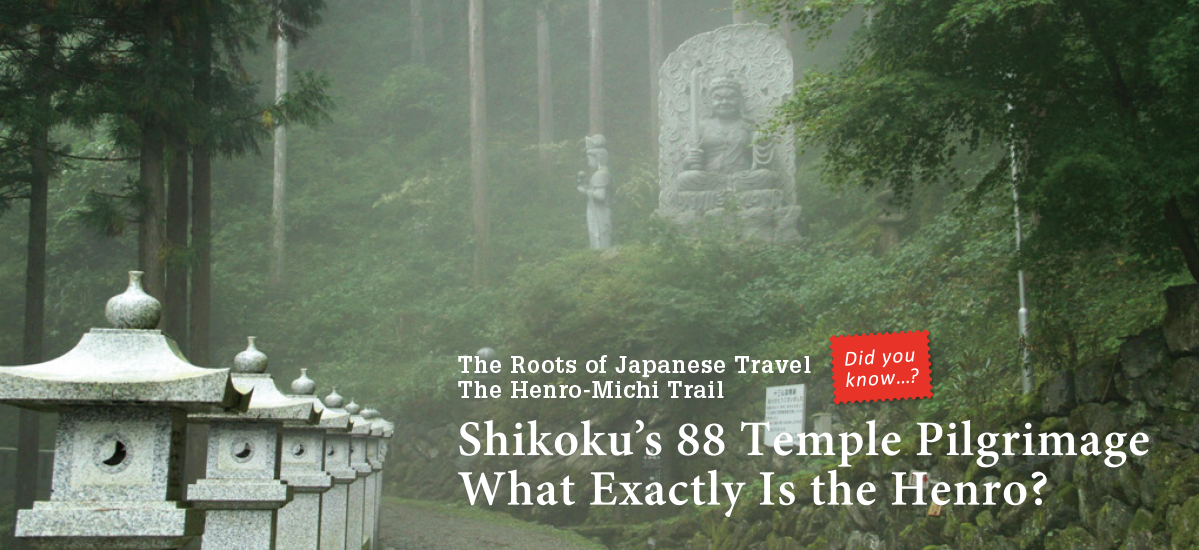
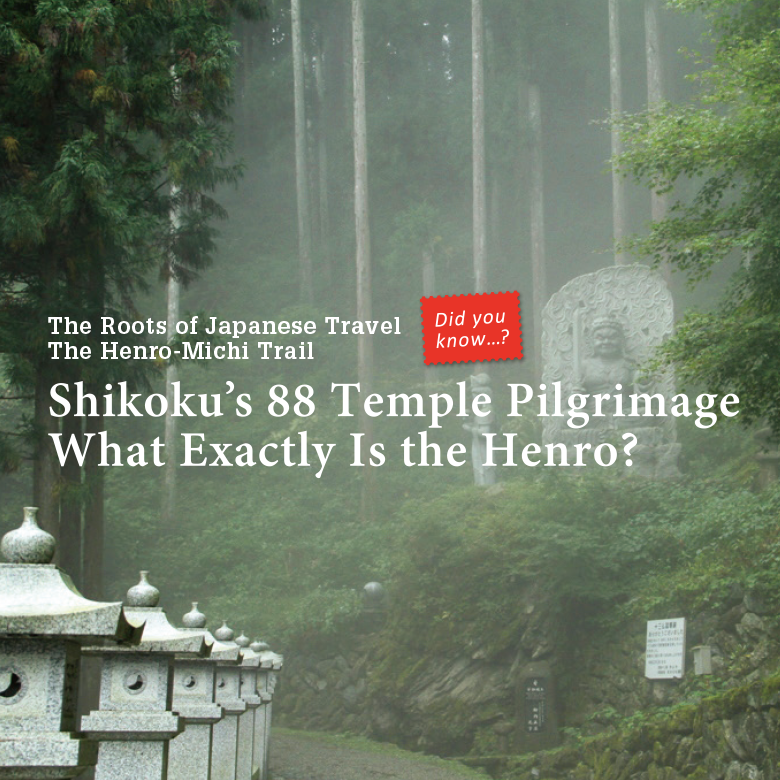
The Shikoku Henro, Shikoku’s 1200-year-old 88 temple pilgrimage, has for generations, been cherished by those who live along its route. The Henro remains deeply entwined with the island’s unique culture of o-settai, the charitable tradition of offering aid to support pilgrims from all over the world.
Photos : 谷口哲 Akira Taniguchi / English Version : Judy Evans
Keyword : Temples / Buddhism / Henro / Kōbō Daishi / 88 Temple Pilgrimage / O-settai
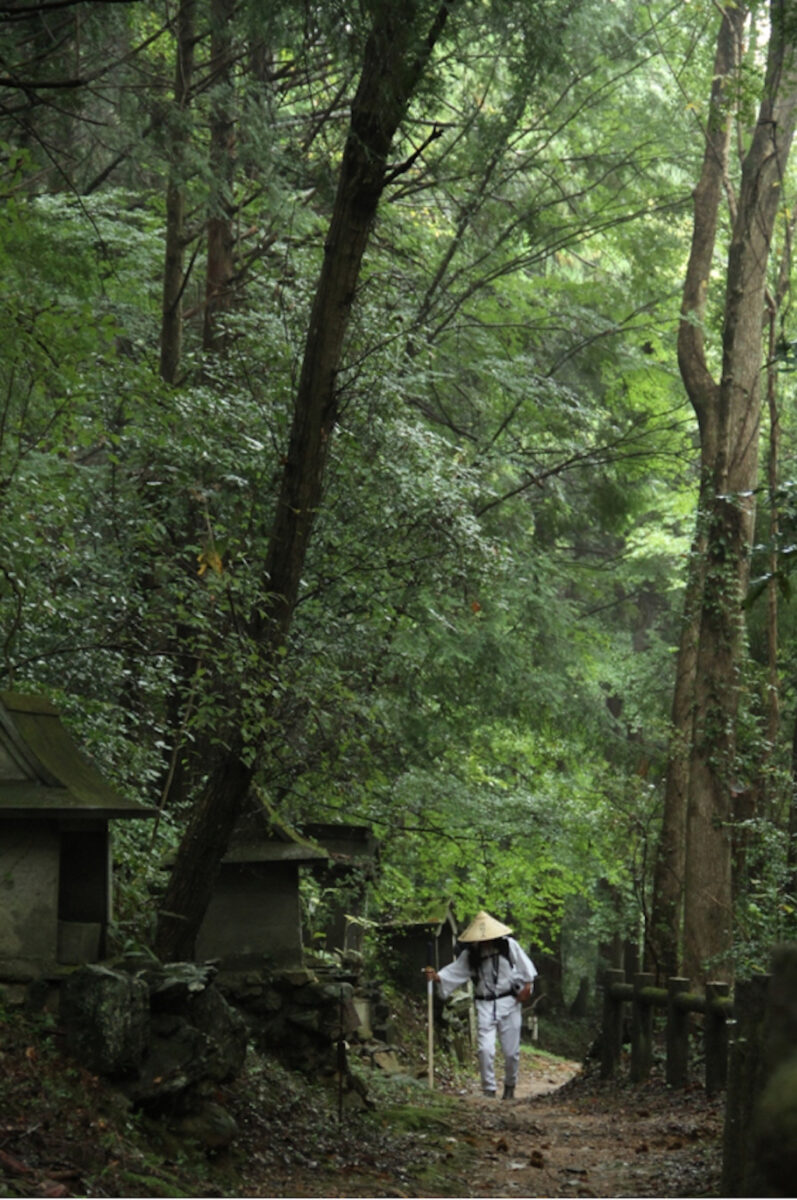
Welcoming All Pilgrims Throughout the Ages
Pilgrims embarking on Shikoku’s 88 temple Henro pilgrimage in olden times had to be prepared for the possibility that they may never return from their journey into the realm of death. Shikoku was a place of exile, a land of wild seas and even wilder forests, and the pilgrimage route is still dotted with the grave markers of those who perished on the path to enlightenment. Pilgrims walked the route in white burial robes, signalling their preparedness for death, actual or metaphorical.
Many modern-day Henro pilgrims still choose to wear clothing that signifies death – white burial clothing (hakui), a sedge hat (sugegasa) to cover the face of the dead, and a staff (kongōzue) that could double as a grave marker. Suitably outfitted, pilgrims walk the arduous trail comforted in the knowledge that the holy monk Kōbō Daishi watches over them as they go; the phrase “dōgyō ninen” (Kōbō Daishi is always with me) is traditionally inscribed on the pilgrim’s hat and staff. Setting out, pilgrims turn their focus inwards as they embark on a metaphorical journey into their own beliefs.
Each pilgrim has their own reason for being on the Henro. Perhaps in the hope of having a wish fulfilled, an ailment cured, or to mark the passing of a loved one. The Henro holds a promise that has drawn pilgrims throughout the ages; the means not only of achieving personal benefit, but also to confront one’s personal demons head on. Even, perhaps, to find answers to the eternal questions surrounding the meaning and purpose of our lives here on Earth.
The Shikoku pilgrimage is constantly evolving, adapting with the times to welcome all types of pilgrims, including increasing numbers of young people, and visitors from abroad. In addition to the traditional pilgrimage on foot, pilgrims these days might travel the route by bicycle, and there are even bus tours that whisk pilgrims from one sacred site to the next. With the route being circular there are no strict rules about where it begins and ends, or in which direction pilgrims must travel. Jun-uchi means visiting the temples in numerical order, while gyaku-uchi means going in the reverse order. Meanwhile, kugiri-uchi refers to doing the pilgrimage over a number of years, one section at a time.
The Spirit of Hospitality Expressed through the Custom of O-settai
For the people of Shikoku, any pilgrim on the path could be a reincarnation of Kōbō Daishi, or even of the Buddha, and locals treat pilgrims accordingly. O-settai involves showing hospitality by offering pilgrims on foot refreshments, places to rest, meals, or even accommodation. The traditional belief is that merit can be gained by offering o-settai to pilgrims, and many believe that a part of the giver then accompanies the pilgrim on the journey. This belief is epitomised in the farewell expression “jibun no bun made o-mairi kudasai”, or “walk for me, too”.
Pilgrims on the Henro trail frequently encounter friendly faces as locals offer kind words and hospitality. Perhaps it’s this warm, person-to-person interaction that most surprises and touches the hearts of visitors on the Henro. O-settai has been part of the local culture for so many centuries that it is second nature to the locals, who unanimously say that it’s not something they’re conscious of.
In the remainder of this article, let’s take a look at just five of the many initiatives residents along the Henro are taking to welcome pilgrims.
Monzen Ichiban-gai
Monzen Ichiban-gai, just across the road from Ryōzen-ji (also known as Temple Number One), stocks all the equipment a pilgrim might need. Opening at seven in the morning to welcome those arriving early to begin their pilgrimage at the first temple, staff are ready to assist visitors from all over the world, dishing out advice and encouragement along with the locally-grown awa-bancha tea in the “O-settai Corner”.
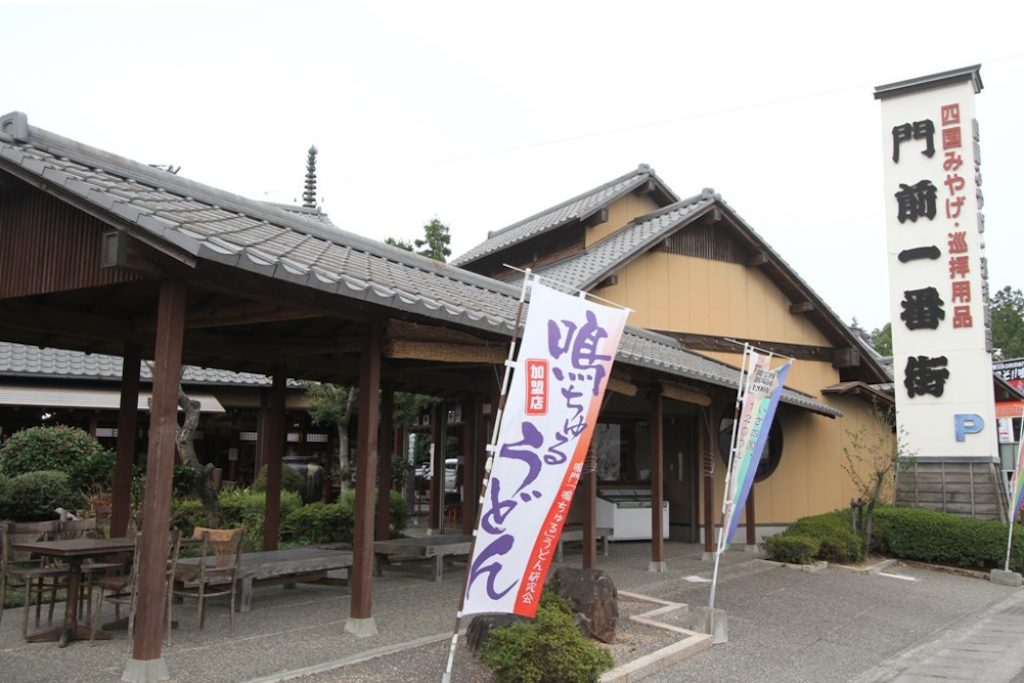
Ichiban-san no Midori-Dokoro & Bandō Machikado Gallery
In 2009, as part of an effort to revitalise the town of Naruto, a local resident group renovated the workshop of a 100-year-old Meiji Era printing house to use as a reception space. Located near the first temple, Ryōzan-ji, local volunteers offer o-settai here. The vintage timber building is a designated Tangible Cultural Property and was used as part of the film set for the 2006 film Ode to Joy (Baruto no Gakuen), a true story about German prisoners of war interned in the Bandō Prisoner-of-War Camp here in Naruto, during the Second World War.
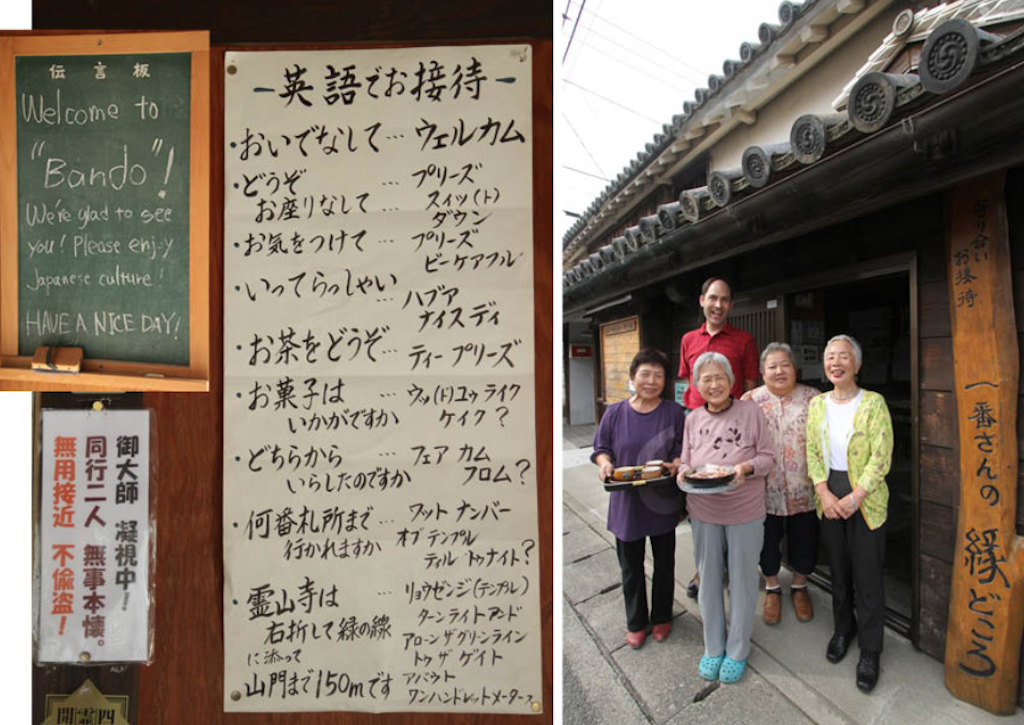
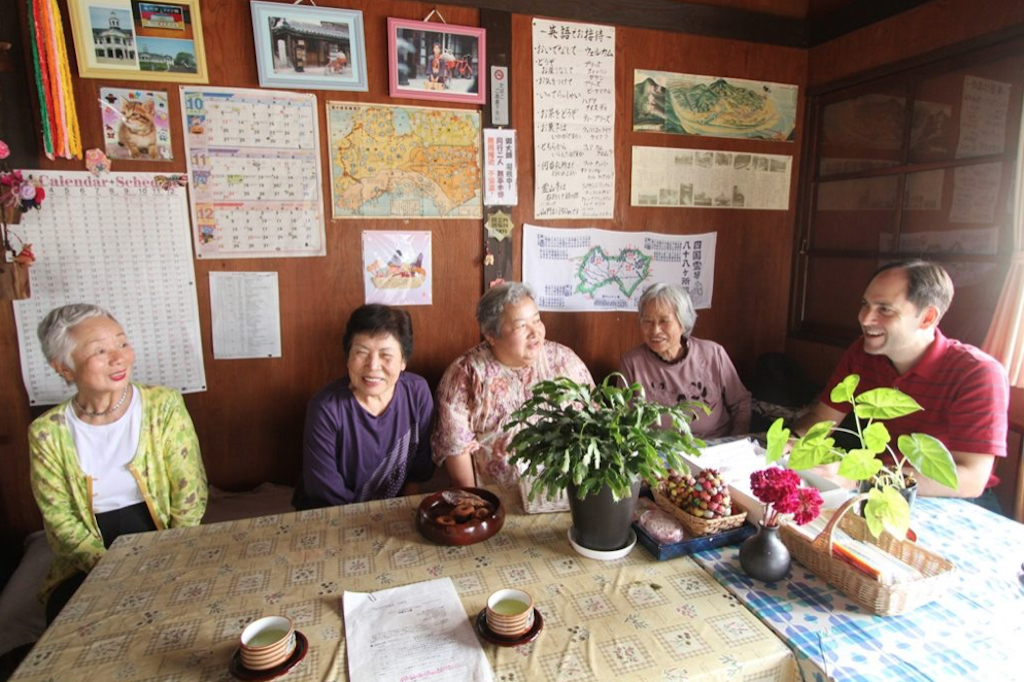
Ryūsui-an Volunteer Group
Ryūsui-an is a former hermitage located along Shōsan-ji Michi, the path connecting the eleventh temple, Fujii-dera, with the twelfth temple, Shōsan-ji. This path includes a series of steep climbs and descents, which, for pilgrims who embarked on the Henro at the first temple, is their first encounter with difficult terrain. Ryūsui-an is now used as an o-settaireception space run by a group of ten volunteers, who take turns staffing the space. A resourceful bunch, the volunteers sell wild vegetables such as bracken shoots (warabi) to pay the utility bills. One of the volunteers tells me with a smile that meeting interesting people, from celebrities to foreign visitors, is one of the things she enjoys most about her work.
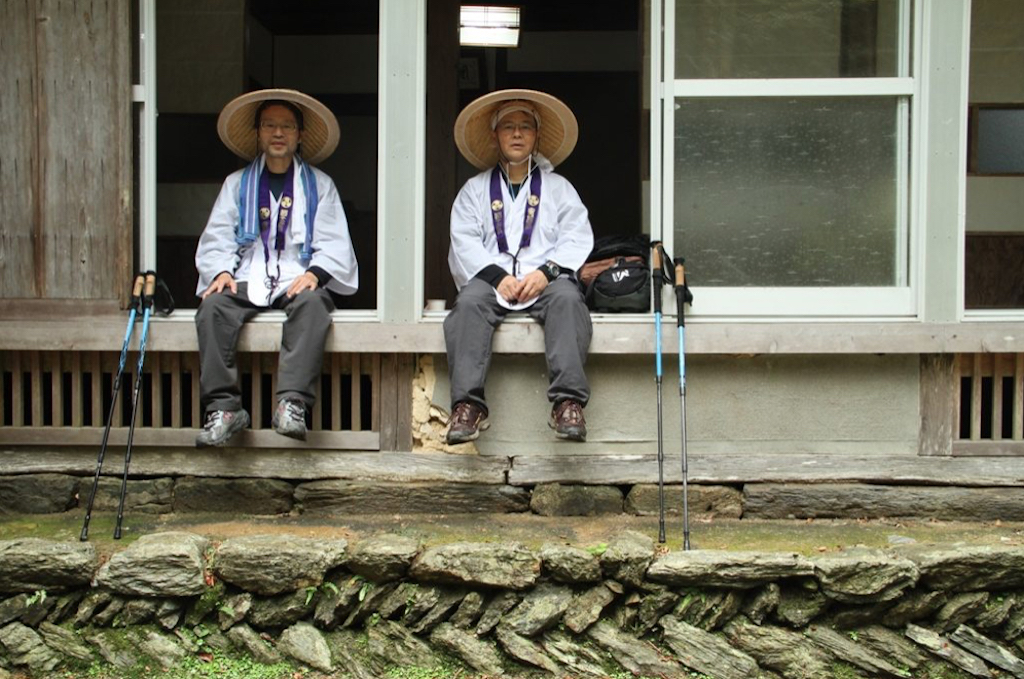
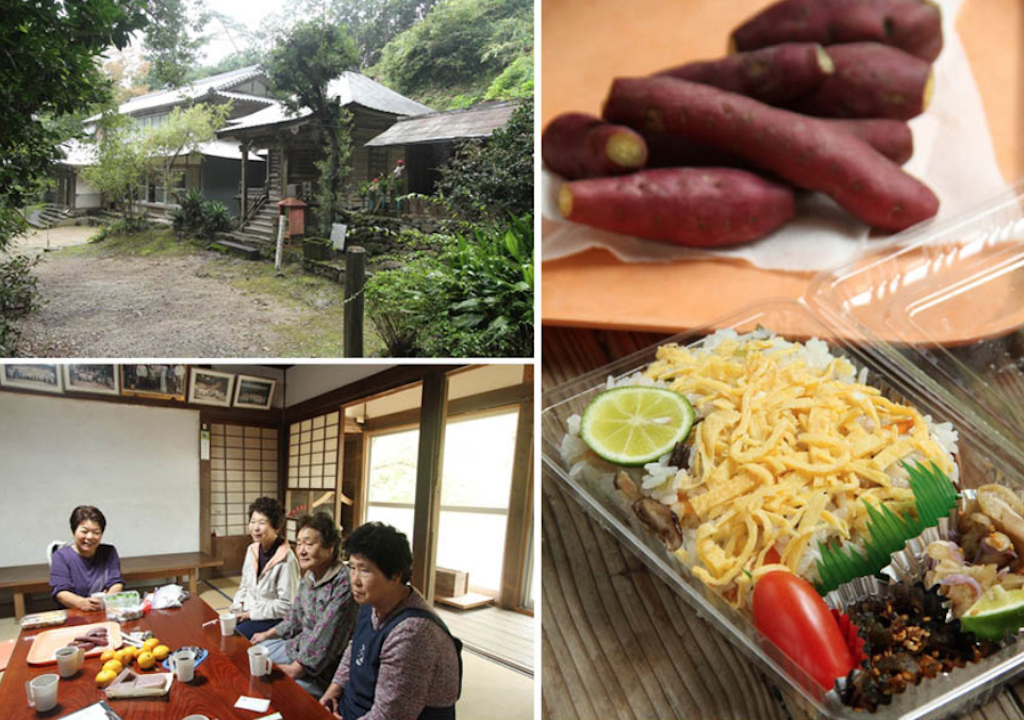
Shōsan-ji Temple, The Twelfth Sacred Site
Shōsan-ji Temple is the second-highest temple on the Shikoku pilgrimage. The views from here, high up in the mountains of Shikoku, are stunning. The route leading to Shōsan-ji from the eleventh temple, Fujii-dera, is so full of steep ups and downs that it’s known locally as “henro-korogashi”, or “pilgrims tumble down”! A friendly welcome awaits pilgrims once they arrive at Shōsan-ji. Shukubō temple accommodation is available and the head priest’s wife uses locally-sourced ingredients to create heart-warming meals for overnight guests. (Dinner and breakfast are included with accommodation. Reservations are essential.)
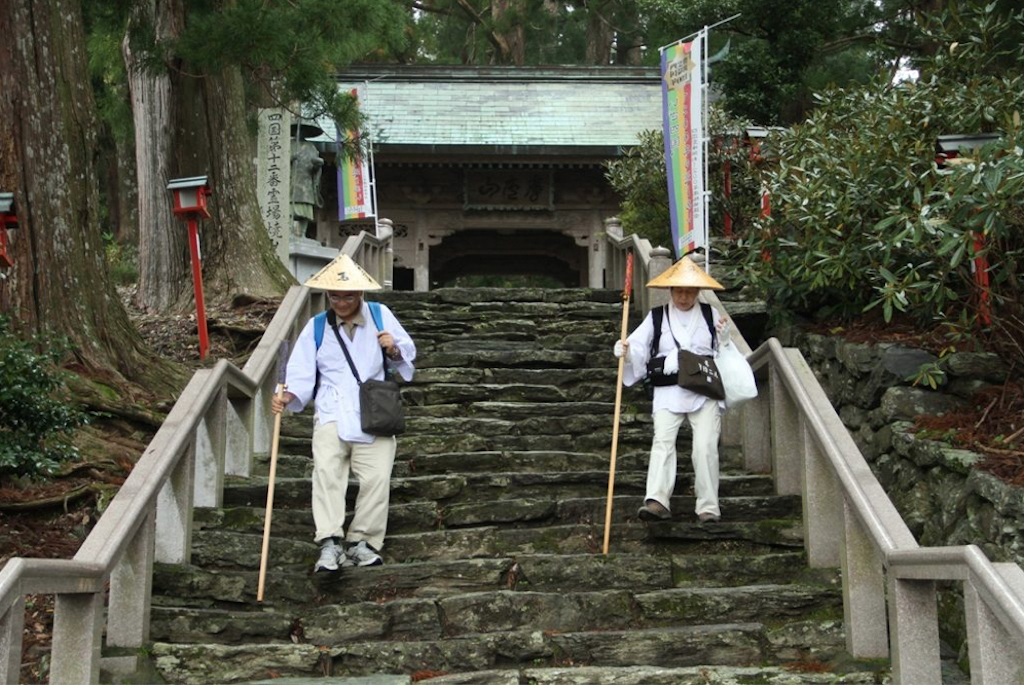
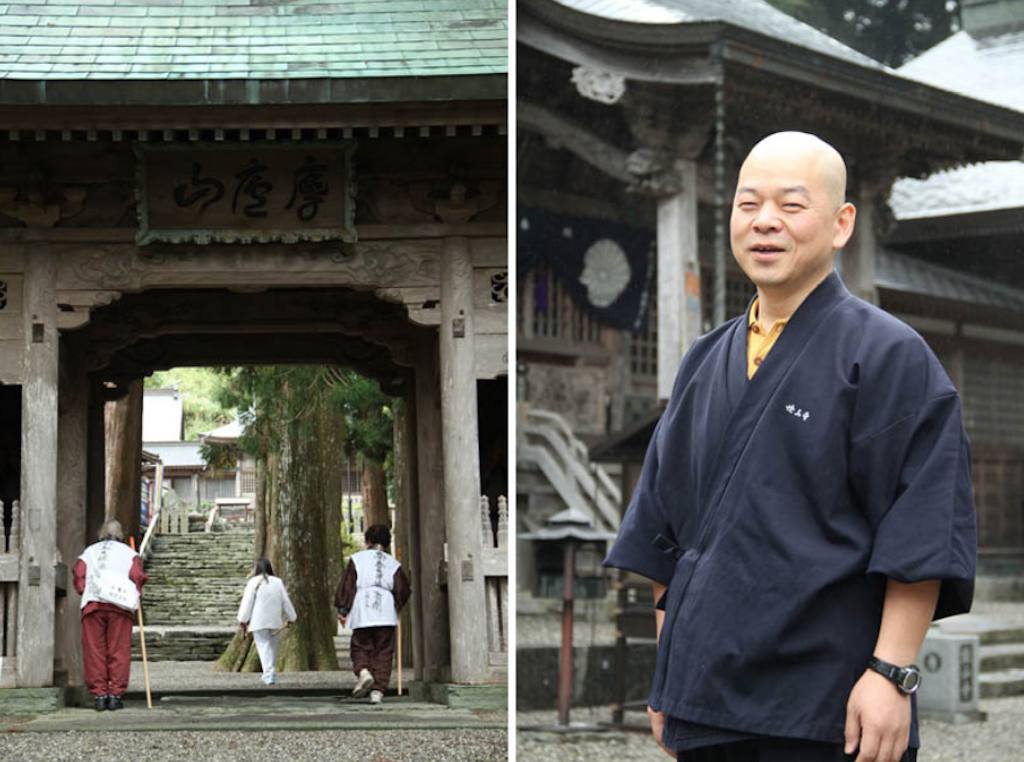
Iyashi-no-Ie, Kamo-no-Yu Onsen
Iyashi-no-Ie is a lodging house near Fujii-dera, the eleventh temple. The 2002 project to build Iyashi-no-Ie was led by Shin Okada, head of the Yoshinogawa City Office’s Agricultural Promotion Section, with the cooperation of local residents. Free lodgings are available on a first come, first served basis. A women-only cabin has been added, and coin-operated washing machines are provided for the use of pilgrims. The lodgings are located on the site of Kamo-no-Yu (Kamojima Onsen). The usual bathing price of 450 yen is reduced to 360 yen for those undertaking the pilgrimage on foot.
